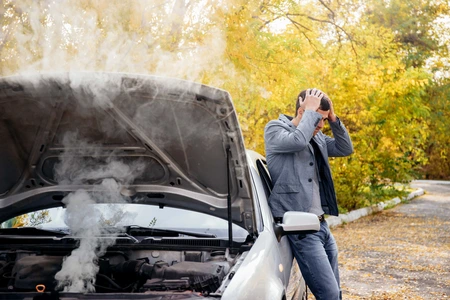The automotive industry is constantly evolving, with manufacturers always looking to enhance the safety of their vehicles through innovative features and technologies. As we move into 2024, a new wave of safety advancements has emerged, promising to make driving safer than ever before. Whether you're in the market for a new car or simply keeping an eye on the latest trends, here's what you can expect in terms of car safety features for 2024.
Enhanced Autonomous Driving Systems
Autonomous driving technology continues to advance rapidly, and in 2024, we're seeing more vehicles equipped with higher levels of autonomy. These systems are now capable of handling more complex driving scenarios, reducing the likelihood of accidents caused by human error. Features like automatic lane keeping, adaptive cruise control, and traffic-aware speed adjustment are becoming more refined, offering a safer and more comfortable driving experience.
Advanced Driver-Assistance Systems (ADAS)
Driver-assistance technologies are not new, but their capabilities are expanding significantly in 2024. Look for enhanced pedestrian detection that works in varying light conditions, cyclist detection, and even animal detection systems that help prevent collisions with wildlife. Additionally, emergency steering assist technology is becoming more common, helping drivers avoid potential accidents actively.
Improved Collision Avoidance Technology
Collision avoidance systems have been upgraded for 2024 with faster sensors and better algorithms that increase reaction times. These improvements help in reducing the severity of accidents or avoiding them altogether. This includes advanced braking technologies that can stop the car quicker and more reliably when an imminent collision is detected.
Connectivity and Telematics
Connectivity features in cars are being used to enhance vehicle safety significantly. Real-time data from GPS and cellular networks can now be used to warn drivers of hazardous conditions on their route, such as bad weather, heavy traffic, or accidents ahead. This year, we're also seeing more vehicles equipped with systems that can communicate with road infrastructure and other vehicles to improve safety through better awareness of the surroundings.
Augmented Reality (AR) Dashboards
Augmented reality dashboards are starting to make their way into more models, providing drivers with real-time information overlayed on the windshield. This technology displays vital navigation and safety information within the driver's line of sight, reducing the need to look away from the road and thereby increasing safety.
Biometric Monitoring
In an exciting development, some premium models now include biometric monitoring systems. These systems can track the driver's vital signs, such as heart rate and alertness, and can detect signs of fatigue or stress. If a potential issue is detected, the system can alert the driver, suggest taking a break, or even take precautionary measures such as tightening the seatbelt and preparing safety systems for possible human error.
Enhanced Night Vision
Night vision in vehicles is also seeing substantial improvements. The latest systems use better thermal imaging and infrared cameras to detect pedestrians, large animals, and other obstacles beyond the range of traditional headlights. This technology provides a clearer view in poor lighting conditions, which significantly enhances nighttime driving safety.
Conclusion
The year 2024 is set to be an exciting one for car safety technologies. With advancements in autonomous driving, enhanced driver-assistance systems, and innovative features like AR dashboards and biometric monitoring, the new generation of vehicles is better equipped than ever to protect drivers and passengers. As these technologies become more widespread, they promise to dramatically reduce traffic accidents and enhance overall road safety. For new car buyers, these features not only offer peace of mind but are quickly becoming must-have components when choosing a new vehicle.
Matthew Hoeck
(715) 965-5844
Homer Skelton CDJR











